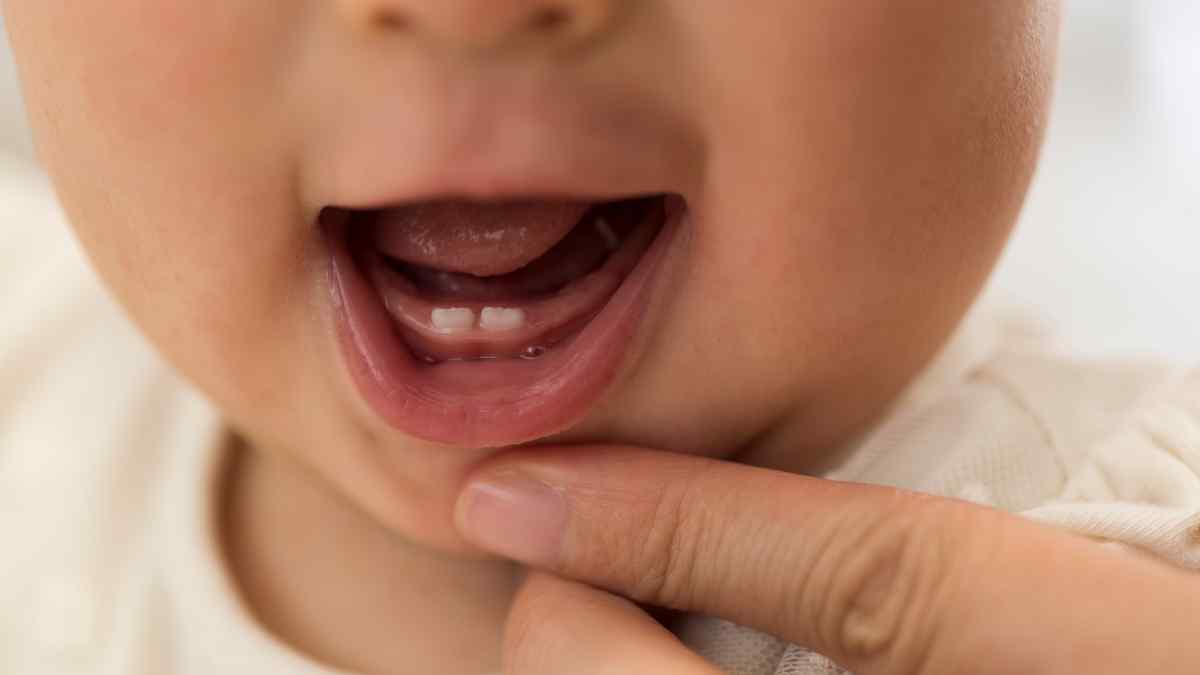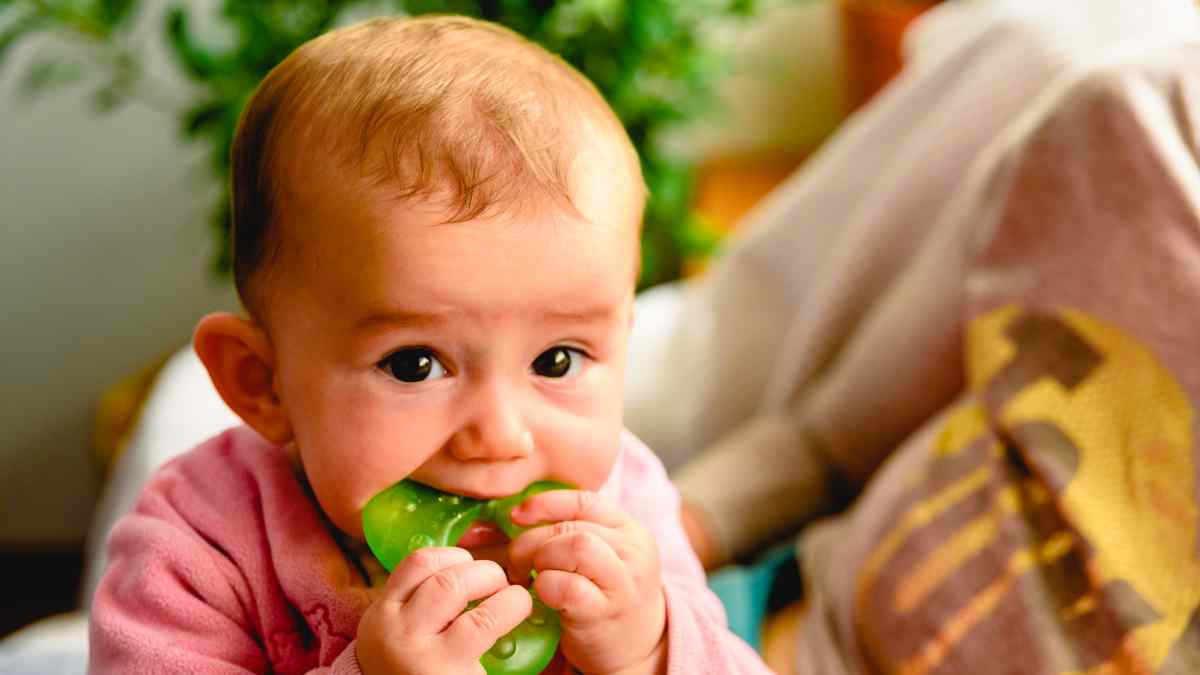Navigating the challenges of infancy can often feel like decoding a constantly changing puzzle. Among the myriad milestones and transitions, teething is one event that many parents approach with a mix of anticipation and anxiety. While those first tiny teeth are indeed a cause for celebration, the symptoms associated with their emergence can sometimes be distressing for both baby and parents.
One concern that isn’t always immediately recognized is the link between teething and hydration. As your little one begins to show signs of those pearly whites, ensuring they remain adequately hydrated becomes paramount. In this article, we will delve into the interplay between teething and hydration, shedding light on what to monitor and how to keep your baby comfortable and well-hydrated during this significant phase of growth.

Understanding Teething
Every parent eagerly awaits the moment their newborn baby flashes that first, adorable toothy smile. But before that first tooth appears, most babies go through the process of teething, a phase that can bring both wonder and challenges. Here’s a closer look at what teething entails and the signs and symptoms to watch for.
Definition and Age Range
Teething is the process by which a baby’s teeth start to emerge through the gums. For most babies, teething begins between 4 to 7 months, but some might show signs as early as 3 months or as late as 12 months. The first teeth, typically the two bottom front teeth, usually make their debut first. By the age of 3, most children will have a full set of 20 primary or “baby” teeth.
Common Teething Symptoms
1. Excessive Drooling: A teething baby might produce more saliva than usual. This excessive drooling can lead to occasional coughing. While drooling is a normal part of teething, parents should monitor for other signs that may indicate a medical condition.
2. Irritability: A new tooth pushing through the gum line can cause discomfort, leading to a cranky baby. The pain can vary as each tooth erupts, with some teeth causing minimal discomfort and others, notably molars, causing more pronounced pain.
3. Sleep Problems: The discomfort of teething might disrupt your baby’s sleep patterns. They might find it harder to fall asleep or wake up more frequently due to teething pain.
4. Sore and Tender Gums: The baby’s gums might appear red and swollen. Gently rub the baby’s mouth with a clean finger or a clean washcloth to provide some relief. Chilled mashed bananas can also help soothe tender gums.
5. Reduced Appetite: With sore gums, your baby might refuse solid foods and even breast milk. It’s essential to monitor their intake and consult a doctor if this persists.
6. Other Symptoms: Some babies might have a low-grade fever, diarrhea, or a slightly raised rectal temperature. However, a high fever or severe diarrhea indicates another medical condition, and parents should seek medical advice.
Helpful Teething Remedies
Teething Toys: Offer your baby teething toys to chew on. These can help alleviate some of the pressure they feel on their gums. Be cautious with teething necklaces, as they can be a choking hazard.
Teething Gels: While some parents swear by teething gels, the American Dental Association recommends consulting with a pediatric dentist before using such products. It’s crucial to ensure the correct dosage and avoid products that could harm a baby’s immune system.
Regular Dental Checkups: As soon as the first tooth emerges, parents should consider scheduling their baby’s first dental visit. Emphasizing children’s oral health early on can set a foundation for healthy habits, helping to avoid cavities and other dental issues.
Tooth Care: The appearance of baby teeth means it’s time to introduce a soft-bristled baby toothbrush. A rice grain-sized amount of fluoride toothpaste is recommended by the American Dental Association for children under three. Brushing helps maintain the baby’s new teeth and familiarizes them with oral care routines.

Hydration Basics for Infants
The fascinating journey of teething doesn’t just come with an array of new teeth but also an evolving need for proper hydration. As we transition from the complexities of teething, understanding the hydration requirements of your little one becomes paramount. So, let’s delve into how much fluid your baby needs and where this hydration should come from.
How Much Fluid Do Babies Need?
The fluid requirements of a baby vary significantly based on their age, weight, and overall health. During the first few months, before the signs and symptoms of teething even start, an infant’s primary source of hydration and nutrition is from breast milk or formula. A general guideline is:
– Newborns: Typically, they consume about 1.5-3 ounces (45-90 milliliters) every 2-3 hours.
– 2 months old: The consumption might increase to 4-5 ounces (120-150 milliliters) per feed.
– 6 months old: As many babies start teething around this age, they could be consuming 6-8 ounces (180-240 milliliters) during each feeding, with about 4-5 feeds daily.
Sources of Hydration for Infants:
1. Breastmilk: Nature’s perfect baby food, breastmilk not only provides essential nutrients but also is a primary source of hydration. Even when your teething baby is showing first teeth, breastmilk remains a primary hydration source. Its composition changes as the baby grows, ensuring they get the correct nutrient balance.
2. Formula: For those who can’t or choose not to breastfeed, infant formula is a suitable alternative. Like breastmilk, it serves as a significant hydration source, especially before introducing solid foods.
3. Water: It’s essential to be cautious when introducing water into an infant’s diet. Before six months, babies generally don’t need water. Their hydration needs are met entirely by breastmilk or formula. Post six months, as the child begins to eat solid foods and especially if the environment is hot, offering a few sips of water can be beneficial. However, it’s crucial not to replace milk feeds with water as milk remains their primary nutrition source.
As the baby’s gums become playgrounds for tooth eruption, they might show a reduced appetite due to sore gums, making hydration even more crucial. Teething toys can provide some relief, and if parents are concerned about severe dehydration signs, it’s wise to consult a pediatric dentistry expert.

Conclusion
Teething and hydration are interconnected aspects of a baby’s growth journey, each with its unique challenges and joys. As parents, it’s imperative to stay informed, observant, and proactive. While teething heralds the arrival of those adorable smiles, it also signifies the increasing importance of proper hydration, oral care, and overall health.
By understanding the nuances of teething and ensuring your baby remains adequately hydrated throughout, you’ll be laying a foundation for a healthier, happier childhood. Remember, every child is unique, and while these guidelines provide a general roadmap, always rely on your intuition, observation, and consultations with healthcare professionals to navigate your baby’s individual needs. Here’s to celebrating every toothy grin and ensuring our little ones thrive during these formative years!
Did you find this article helpful? Please let us know by commenting below. If you have any questions, don’t hesitate to ask!



